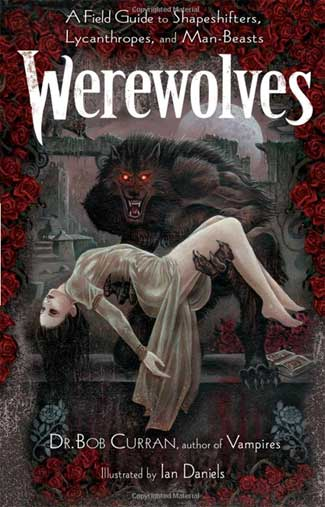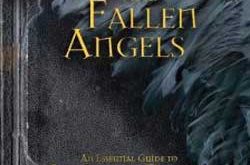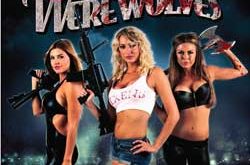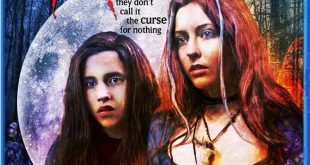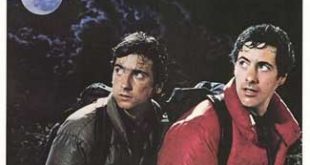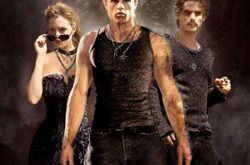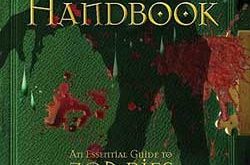This edition of Unexplained Confidential is dedicated to Michele Gosciniak. Happy Birthday from Michael Joy and Horrornews.net !
It’s my favorite time of the year and it’s custom made for everything scary and spooky. Where did September go? I blinked my eyes and that month is history. I guess I’ll just have to put in some horrornews overtime this month. I think I have a treat ( trick? ) for you this edition of Unexplained Confidential as we have some excellent werewolf chatter. Let us jump right into the fire,
Interview with Robert Curran
Author of Werewolves: A Field Guide to Shapeshifters, Lycanthropes, and Man‐ Beasts?
What is it about a werewolf that prompted you to write this book?
I suppose I was fascinated by the sources of the image and the human rationale behind werewolf allegations. For me, the question is not “Do werewolves exist?” rather it is “Irrespective of where or not they do exist , what is it that makes us want to believe in them?” In other words “What does the belief tell us about ourselves?” I would suggest that there are still ancient and primordial hunting urges locked away within us – urges that have existed since the days that we were hominid hunters – which we have heavily suppressed over the years both physically and culturally but which are still there in some form. And I wanted to examine some of the evidence to find out if that theory was true Writing this book helped me do it, I had already written books on vampires and zombies so I suppose that you could also argue that Werewolves were the next logical step.
It was an intriguing work to write.
How long did it take you to research and write Werewolves?
I think that I have been researching and mentally writing the book for most of my life. It’s just now that I’ve got it onto paper. The actual writing took about six or seven months but I suppose the idea really came to me some time before when I was writing a book on vampires. I had a lot of material on the subject from other works that I’d written and it was a question of pulling that together into some sort of cohesive order. The research, however, was going on from years before so it was not just a question of me sitting down and doing it as a one-off exercise.
Are there cases of real werewolves in today’s society?
It depends what you mean by “werewolves”. In my book I have tried to show how the term was often use to bring together a number of elements which were found in earlier societies – extreme violence, anti-social behaviour, even cannibalism. Many of these elements still exist in the world but in rather different forms. Many of those accused during the French werewolf trials of the late 1500s were people who were strange, poor, lonely or who exhibited unusual behaviour traits . As with witchcraft, when social turmoils were at their height – for example when domestic animals were mutilated or young children disappeared or the area was plagued by ravening wolves, the spectre of the werewolf was wheeled out. . We tend to look on such acts as deviant and abhorrent but such acts may make up a fundamental part of another culture .
The idea of the man transforming into a beast also appeared when what society considered “deviant behaviour” was also discovered- perhaps this was because it was suggestive of the “bestial side” of Man coming to the fore. That was the interpretation then and to answer the question, there may be “real” werewolves about only we interpret them differently.
Why is the full moon the trigger for most werewolves?
Although the answer to this lies in the development of modern mental medicine, the associations between the wolf and the moon go back a long way. If we look at the wolf as a hunter, then in the ancient world, Diana or Artemis was the goddess of the hunt. She was supposed to have hunted in the moonlight with two wolves by her side and she became the symbol for the hunt. In later early psychiatry, in the works of people such as Charcot, the influence of the moon became thought of as an agent which disturbed the nervous system Although there is no central reference to the moon’s transforming influence in old folktales, this element became added on by many writers, taking their lead from early medical men. This was then taken up by many films who made it part of their plotlines because of its dramatic effect. Today, like the silver bullet it had become an incontrovertible part of werewolf folklore.
In What Part of the World are werewolves most feared?
In any culture where wolves are part of the environmental fabric, there are stories concerning werewolves. Perhaps it is the nearness of wolves and perhaps a closer examination of their habits which gives rise to the connection between man and wolf. At one times wolves roamed relatively freely all over Europe and so, as far as we are concerned, the wolf comes to prominence in tales such as Red Riding Hood but wolves and stories of people turning into them appear in other cultures further East – e.g. Greece – too. And of course, in other continents such as Africa or South America, there are stories of individuals transforming themselves into other types of animal – e.g. lions, jaguars etc. But anywhere wolves predominated gave rise to such tales and fears – the oldest written werewolf tale that we know of, for instance, surprisingly comes from Ireland which was once known as Wolfland on account of the numbers of wolves that were there.
What part does the church play in werewolf mythology?
The Church played a central role in shaping how we perceived the werewolf. In early times, men who changed into wolves were not necessarily thought of as evil . Alleged people in far-away countries might have appeared terrifying but they were far away. The Church however, changed the perception of the werewolf – such beings were “not natural”; they contravened the laws of God and therefore must be allied to the Devil. Religious teaching also gave a kind of immediacy to the idea of the werewolf – no longer was it away in some far distant land, it was within the very community. And in areas where perhaps wolf attacks increased at certain times of the year – when game was poor or the hunting was bad – this was seized on by local communities. As with many things in medieval and early modern life, the Church defined common perceptions and part of our picture of the werewolf as the ravening beast – the evil wolf spirit – may very well come from that period.
For werewolf enthusiasts, would you recommend any specific movie or documentary on the subject?
Many of the films which have appeared of late are slightly sensationalist . A number of films have also built in bits and pieces of their own folklore passing it off as “Romany gypsy tradition” in order to make the film appear authentic. There’s nothing wrong with that I suppose, it makes the film slightly more interesting. So it depends what you want – do you want to be entertained or do you want to be educated? However, having said that I’ve always enjoyed An American Werewolf in London which I think is a terrific film which combined humour and menace. There are a number of documentaries – not specifically on the werewolf – but on the relationship between men and wolves. I can’t think of any specific titles at the moment but if you scan the National Geographic channels, you’re sure to find them.
What are your thoughts on people who suffer from the Werewolf Syndrome ?
Well it’s a medical condition that has been amongst us for a long number of years and in past times it has been exploited by showmen and such like <”The Hairy Woman”>. I didn’t mention it in my book for two reasons – firstly for reasons of space
and secondly because of a certain sensitivity towards those who still might suffer from it to a greater or lesser degree. For example, when I was growing up, there was a man whom I knew who was rather hairy and who was the subject of many cruel jokes. As well as that, when I taught in a rather rough school here in Ireland, one of my colleagues suffered from a very mild form of the condition and was the butt of many of the pupil’s jokes. And as I said, in past times many poor people suffering from the condition were exploited for money – as freaks and oddities. Most of them could have gone on to lead a fairly healthy life. So I suppose that has coloured my views on the subject.
In your research linking man and wolf, do you think those of us in the human race who participate in such acts as cannibalism or bestiality are closer to animal than most?
I don’t really think that it’s up to us to judge. And of course it depends what you mean by “closer to the animal”
. If you want to put it in Westernised Christian terms then there is no doubt that men can do great good but they can also do great evil – as long as you remember that many of the greatest horrors have been committed by the Church itself.
I remember growing up thinking of Dracula, Frankenstein and the Wolfman as the three main horror movie monsters.
Since my childhood I’ve been introduced to new movie monsters with more traditional names, Freddy, Jason and Michael. Do you think the days of the werewolves’ popularity are behind us or have we come full circle with the upcoming remake of the Wolfman?
I think, as I said at the outset, that it is a question of perception. I believe that there is at the core of every one us there is some sort of fear of the unknown. Now whether that takes the form of a werewolf or of Freddie Kruger with long fingernails is immaterial – what underpins it is the fear of the unknown and of being hurt or killed. The more modern adaptations are all about relating the ideas to the modern world. However, I believe too that the old horrors still lie somewhere in our subconscious and from time to time they will resurface in more “traditional” forms – hence the remake of The Wolfman. Werewolves haven’t gone away you know!
Thanks to www.warwickassociates.net
I want to thank Robert Curran for taking time to talk with HorrorNews.net and Unexplained Confidential.
I can honestly say that I’m leaving today knowing a little bit more about werewolves and their history. I think the character of the wolfman is grounded as one of the all time legendary monsters and when it comes down to it what’s old is new again.
Lon Chaney Jr. captured our imaginations as kids with his portrayal of the beast in The Wolfman (1941) and then again in Frankenstein meets The Wolfman (1943), and in a childhood comedy favorite, Budd Abbott and Lou Costello meet Frankenstein (1948). In the upcoming remake of The Wolfman in 2010 , at least from what I’ve seen so far, Benicio Del Toro is going to do mad justice to the character. It looks like a perfect compliment to Bram Stoker’s Dracula (1992) which also starred Anthony Hopkins.
Those two movies could definitely book end each other. It’s awesome that Hopkins in the common link. I would love to the classic image of Frankenstein get brought back to life for the big screen. In my opinion, there hasn’t been a decent Frankenstein movie in decades. I think we are about due, and I think I’d much rather see Frankenstein get remade instead of more modern movies like Nightmare of Elm Street.
Perhaps Hopkins would be available for such a Frankenstein remake. Time will tell on that one. Well, for now, It’s October. Halloween month. I think there’s full moon out, isn’t there? There’s no better time to talk about werewolves. Oh, and for the record, well my record, American Werewolf in London is some masterful filmmaking and might just be the perfect werewolf movie… thus far. One of the most memorable werewolf transformation scenes in cinema. Let’s all enjoy a good howl at the moon this evening.
Later F’N’ Later,
Joyhorror
 Horror News | HNN Official Site | Horror Movies,Trailers, Reviews
Horror News | HNN Official Site | Horror Movies,Trailers, Reviews
